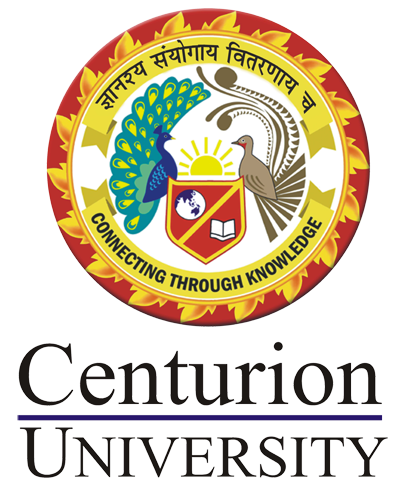Electricity and Magnetism
Course Attendees
Still no participant
Course Reviews
Still no reviews
Code(Credit) : CUTM1488 (3-2-1)
Course Objectives
- Study the electric and magnetic fields in detail.
- Study and explore the dielectric properties of matter.
- Study the relation between electric and magnetic fields.
Course Outcomes
Upon successful completion of this course, students will be able to:
| COs | Course outcomes |
| CO1 | Understanding the characteristics and properties of electric and magnetic fields. |
| CO2 | Understanding and gaining knowledge on the behavior and use of dielectrics. |
| CO3 | Understand the concepts of magnetism |
| CO4 | Understand the concepts of electoral circuits |
| CO5 | Experiences electricity & magnetism in practice mode. |
Course Syllabus
Module-I
Electric Field
Electric field: Electric field lines. Electric flux. Gauss’ Law with applications to charge distributions with spherical,
Conservative nature of Electrostatic Field. Electrostatic Potential. The Uniqueness Theorem. Potential and Electric Field of a dipole. Force and Torque on a dipole, cylindrical and planar symmetry, Laplace’s and Poisson equations
Module-II
Electrostatic energy of system of charges. Electrostatic energy of a charged sphere. Conductors in an electrostatic Field. Capacitance of a system of charged conductors. Parallel-plate capacitor. Capacitance of an isolated conductor. Method of Images and its application to: (1) Plane Infinite Sheet and (2) Sphere, Surface charge and force on a conductor.
Practice 1: Determination dielectric constant by using parallel plate capacitors
Module-III
Dielectric Properties of Matter: Electric Field in matter. Electrical Susceptibility and Dielectric Constant. Capacitor (parallel plate, spherical, cylindrical) filled with dielectric. Displacement vector D. Relations between E, P and D. Gauss’ Law in dielectrics, Polarization, Polarization charge
Module-IV
Biot-Savart’s Law and its simple applications: straight wire and circular loop. Current Loop as a Magnetic Dipole and its Dipole Moment (Analogy with Electric Dipole). Ampere’s Circuital Law. Properties of B: curl and divergence. Vector Potential. Magnetic Force on (1) point charge (2) current carrying wire (3) between current elements. Torque on a current loop in a uniform Magnetic Field.
Relation between B, H, M. Ferromagnetism, Magnetic force and Magnetic Field, Ampere’s Circuital Law application to (1) Solenoid and (2) Toroid, Magnetic Properties, B-H curve and hysteresis
Practice 2: To study the variation of magnetic field with distance along the axis of a circular coil carrying current.
Practice 3: To determine the reduction factor of the given tangent galvanometer (K).
Module-V
Electromagnetic Induction: Faraday’s Law. Lenz’s Law. Self-Inductance and MutualInductance. Reciprocity Theorem. Energy stored in a Magnetic Field. Introduction to Maxwell’s Equations. Charge Conservation and Displacement current, Charge Conservation
Practice 4: To determine self-inductance of a coil by Anderson’s bridge.
Practice 5: To determine self-inductance of a coil by Rayleigh’s method.
Practice 6: To determine the mutual inductance of two coils
Module-VI
Electrical Circuits: AC Circuits: Kirchhoff’s laws for AC circuits. Complex Reactanceand Impedance. Series LCR Circuit: (1) Resonance, (2) Power Dissipation and (3)
Quality Factor, and (4) Band Width. Parallel LCR Circuit.
Practice 7: To design series RC circuit and find out the current flowing thorugh each component.
Practice 8: To design series LC circuit and find out the current flowing thorugh each component.
Practice 9: To design Series RL circuit and find out the current flowing thorugh each component.
Practice 10: To study the variation in current and voltage in a series LCR circuit
Module-VII
Network theorems: Ideal Constant-voltage and Constant-current Sources. NetworkTheorems: Thevenin theorem, Norton theorem, Superposition theorem., Ideal Constant-current Sources, Reciprocity theorem, Maximum Power Transfer theorem. Applications to dc circuits
Practice 11: To verify the Thevenin theorems.
Practice 12: To verify the Norton theorems
Text Books:
1. Electricity and Magnetism by D.C.Tayal, Himalaya Publishing House.
Reference Books:
1. Electricity and Magnetism - K. K. Tiwari
2. Elements of Electromagnetics, M.N.O. Sadiku, 2010, Oxford University Press.
3. Engineering Electromagnetics by W.H.Hayt&J.A.Buck.
4. Introduction to Electrodynamics by D J Griffiths, PHI Learning, 2009.
5. Electricity and Magnetism - Segal, Chopra, Segal.
6. Electricity, Magnetism & Electromagnetic Theory, S. Mahajan and Choudhury, 2012, Tata McGraw
7. Electricity and Magnetism, Edward M. Purcell, 1986 McGraw-Hill Education
Session Plan
Session 1
Electrostatic potential
Session 2
Potential and Electric Field of a dipole
Youtube-https://www.youtube.com/watch?v=Zp_WwzlVkDs
PPT-https://www.slideshare.net/sheebabhagiavahy/electric-field-due-to-dipole
Session 3
Applications to charge distributions with spherical
Session 4
Assignment 1 (1hr)
Cylindrical and planar symmetry
Session 5
Assignment 2 (1 hr)
Laplace’s and Poisson equations
PPT-https://www.slideshare.net/abhishekchoksi56/poissons-and-laplaces-equation
Session 6
Potential and Electric Field of a dipole
youtube-https://www.youtube.com/watch?v=1j2kyIyNZ2o
PPT-https://www.slideshare.net/abhinaypotlabathini/electric-field-dipoles
Session 8
Electrostatic energy of system of charges
Youtube-https://www.youtube.com/watch?v=_rI9pYdBphI
PPT-https://www.slideshare.net/cscottthomas/ch19-electric-potential-energy-and-electric-potential-online
Session 9
Electrostatic energy of a charged sphere.
Youtube-https://www.youtube.com/watch?v=GdDc3hQosuk
PPT-https://www.slideshare.net/ermanoj1466/electrostatics-12892951
Session 10
Assignment 3 (1 hr)
Surface charge and force on a conductor
Youtube-https://www.youtube.com/watch?v=GdDc3hQosuk
PPT-https://www.slideshare.net/ermanoj1466/electrostatics-12892951
Session 11
Practice 1 (2 h)
Determination dielectric constant by using parallel plate capacitors
Session 12
Capacitance of a system of charged conductors.
youtube-https://www.youtube.com/watch?v=R2QQ0yiqH_U
PPT-https://www.slideshare.net/ShwethaInspiring/electrostatics-4
Session 13
Parallel-plate capacitor. Capacitance of an isolated conductor.
Youtube-https://www.youtube.com/watch?v=LO56WRcg6jM
PPT-https://www.slideshare.net/ShwethaInspiring/electrostatics-4
Session 14
Assignment 4 (1 hr)
Polarization, Polarization Charges
Youtube-https://www.youtube.com/watch?v=2KTGdX951Z0
Youtube-https://www.youtube.com/watch?v=KBJl1qiYOgo
PPT-https://www.slideshare.net/vaishnavibathina/unit-3-35590134
Session 15
Electrical Susceptibility and Dielectric Constant.
Youtube-https://www.slideshare.net/vaishnavibathina/unit-3-35590134
PPT-https://www.slideshare.net/vaishnavibathina/unit-3-35590134
Session 16
Capacitor filled with the dielectric
Youtube-https://www.youtube.com/watch?v=MufP4GN4Z90
PPT-https://www.slideshare.net/1anaya/capacitance-and-dielectrics
Session 17
Relations between E, P and D
PPT-https://www.slideshare.net/GyanraoPhysics/relation-between-de-and-p-vectors-dolly-rajput
Session 18
Gauss Law in dielectrics
Youtube-https://www.youtube.com/watch?v=yOv4xxopQFQ
PPT-https://www.scribd.com/document/258883206/PPT11-Gauss-Law-in-Dielectrics
Session 19
Assignment 5 (1 hr)
Magnetic Force and Magnetic Field
Youtube-https://www.youtube.com/watch?v=R4ht2RcWVlI
PPT-https://www.slideshare.net/simonandisa/63-magnetic-force-and-field
Session 21
Application of Biotsavarts Law
Youtube-https://www.youtube.com/watch?v=sFre-bMvBeI
PPT-https://www.slideshare.net/simonandisa/63-magnetic-force-and-field
Session 22
Ampere's circuital Law
Youtube-https://www.youtube.com/watch?v=sWqCzwmH56E
PPT-https://www.slideshare.net/tayyabsaeed8/amperes-circuital-law-and-its-applications
Session 23
Assignment 6 (2 hr)
Application of Ampere's circuital Law
Youtube-https://www.youtube.com/watch?v=4zvvAjj18Dk
PPT-https://www.slideshare.net/tayyabsaeed8/amperes-circuital-law-and-its-applications
Session 24
Magnetic Force on point charge
Youtube-https://www.youtube.com/watch?v=xoq_gxK7gy0
PPT-https://www.slideshare.net/tayyabsaeed8/amperes-circuital-law-and-its-applications
Session 26
Assignment 7 (1 hr)
Magnetic Properties
Youtube-https://www.youtube.com/watch?v=0QweGwwifE4
PPT-https://www.slideshare.net/vaishnavibathina/unit-4-35590162
Session 27
Ferromagnetism
Youtube-https://www.youtube.com/watch?v=xYmagO9Fq_g
PPT-https://www.slideshare.net/sinta11697/physics-feromagnetism
Session 28
Assignment 8 (2 hr)
B-H curve and hysteresis
Youtube-https://www.youtube.com/watch?v=92pVsYbHPLk
PPT-https://www.slideshare.net/DhruvDmp/bh-curve-hysteresis-loop
Session 29
Practice 2 (2 hr)
To study the variation of magnetic field with distance along the axis of a circular coil carrying current.
Youtube-http://vlab.amrita.edu/?sub=1&brch=192&sim=972&cnt=1
Session 30
Practice 3 (2 hr)
To determine the reduction factor of the given tangent galvanometer (K).
Youtube-http://vlab.amrita.edu/?sub=1&brch=192&sim=1049&cnt=1
Session 31
Faraday’s Law and Lenz's Law
Youtube-https://www.youtube.com/watch?v=3HyORmBip-w
PPT-https://www.slideshare.net/erletshaqe1/lecture-25-induction-faradays-law-lenz-law
Session 32
Self-Inductance and MutualInductance
Youtube-https://www.youtube.com/watch?v=hoTInTKij0o
PPT-https://www.slideshare.net/saahil750/self-inductance-mutual-inductance-and-coeffecient-of-coupling
Session 34
Assignment 9 (1 hr)
Conservation of Charge
Youtube-https://www.youtube.com/watch?v=-k7YY0d3NtA
PPT-https://www.slideshare.net/AnkurPatel14/charge-and-its-property
Session 35
Displacement current.
Youtube-https://www.youtube.com/watch?v=oXmcCDB6SKY
PPT-https://www.slideshare.net/MohammedKalikavu/displacement-current
Session 36
Practice 4 (2 hr)
To determine self-inductance of a coil by Anderson’s bridge.
Session 37
Practice 5 (2 hr)
To determine self-inductance of a coil by Rayleigh’s method.
Session 38
Practice 6 (2 hr)
To determine the mutual inductance of two coils
Session 40
LC Inductor-Capacitor Resonating Circuits
Youtube-https://www.youtube.com/watch?v=Mq-PF1vo9QA
PPT- https://www.slideshare.net/ShubhamSojitra/rlc-circuit-75787703
Session 41
LCR Resonating Circuits
Youtube-https://www.youtube.com/watch?v=Ml7KnNoX0RA
PPT-https://www.slideshare.net/ShubhamSojitra/rlc-circuit-75787703
Session 42
Series Resonance LCR Circuits
Youtube-https://www.youtube.com/watch?v=YLGrugmDvc0
PPT-https://www.slideshare.net/ShubhamSojitra/rlc-circuit-75787703
Session 43
Ideal Constant-voltage and Constant-current Sources
Youtube-https://www.youtube.com/watch?v=GhR-OGCT510
PPT- https://www.slideshare.net/GaMeBoyisCooL/voltage-and-current-source-foe-circuits-and-networks
Session 44
Practice 7 (2 hr)
To design series RC circuit and find out the current flowing thorugh each component
Session 45
Practice 8 (2 hr)
To design series LC circuit and find out the current flowing thorugh each component.
Session 46
Practice 9 (2 hr)
To design Series RL circuit and find out the current flowing thorugh each component.
Session 47
Practice 10 (2 hr)
To study the variation in current and voltage in a series LCR circuit
Session 48
Thevenin theorem
Youtube-https://www.youtube.com/watch?v=rwHgicnjJEE
PPT-https://www.slideshare.net/abhishekchoksi56/thvenins-theorems
Session 49
Norton's theorem
Youtube-https://www.youtube.com/watch?v=DdLA8rntWEY
PPT-https://www.slideshare.net/SyedHasanSaeed/nortons-theorem
Session 50
Superposition theorem
Youtube-https://www.youtube.com/watch?v=S0GsrzjVkd4
PPT-https://www.slideshare.net/jayanshugundaniya9/superposition-theorem-35689162
Session 51
Session 52
Maximum Power Transfer Theorem
Youtube-https://www.youtube.com/watch?v=Tsedxs8STQY
PPT-https://www.slideshare.net/hashishmeena/maximum-power-transform
Session 53
Session 54
Case Studies
Case Studies
Our Main Teachers
Ph.D. (Topic: Effect on Electrical Properties of Rare Earth Doped BiFeO3– PbZrO3) from Sambalpur University with the collaboration of Central Glass & Ceramic Research Institute, Kolkata is presently Assistant Professor at Department of Physics, School of Applied Sciences, CUTM, Bhubaneswar, Odisha, India. I have guided 6 M.Phil students (6 completed ) and 2 PhD student […]



Recent Comments